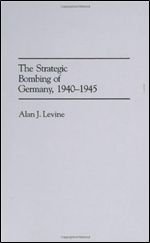The first half-century of industrial archaeology was, then, largely driven by the need to ensure that buildings and structures from the industrial past which still existed in the contemporary landscape were recognized and, where possible, either recorded or preserved.
Much of the impetus had come from the voluntary sector with increasing professional involvement. The 1990s, however, certainly in the UK and to some extent elsewhere, witnessed a fundamental change in the funding of archaeology. In the UK, this has been expressed as ‘the polluter pays’, much archaeological work no longer being driven by research needs but by rescue priorities in advance of development and funded by the developers themselves. Although this has undoubtedly resulted in a vast increase in the amount of archaeological work undertaken on both sites and buildings, it has also led to profound criticisms that research - or the increase of knowledge and understanding - is no longer the imperative of most archaeological work that is now carried out, largely by contract archaeologists whose numbers have dramatically increased. It was to counter such criticism that English Heritage undertook a program leading to the publication of both regional and national research frameworks into which discoveries made through developer-funded work could be integrated. The regional research frameworks so far published in the UK have sections on both post-Medieval and industrial archaeology, while the AIA, in conjunction with English Heritage, published in 2005 Understanding the Workplace: A Research Framework for Industrial Archaeology in Britain, edited by David Gwyn and Marilyn Palmer. This concentrated on the role of human agency in industrial archaeology, the term ‘workplace’ implying not only a building in which work has taken place but also the people who operated within that workplace to carry out the processes. It is not a comprehensive agenda, omitting many themes
Such as landscape characterization, the extractive industries, and the analysis of artifacts, and needs to be read alongside David Barker and David Cranstone’s 2004 edited volume, The Archaeology of Industrialization, which emanated from a conference jointly organized between the Association for Industrial Archaeology and the Society for Post-Medieval Archaeology at Bristol in 1998.
The increasing involvement of professional archaeologists in industrial archaeology has also led to some useful developments in methodology, none more so than that devised by Michael Nevell and John Walker of Manchester University Archaeological Unit. They plotted when new types of industrial site first appeared in the landscape and then ascribed their introduction to one of the three social classes identified in the region, lords, freeholders, and tenants. This Manchester Methodology may not be applicable to areas with a less-defined social structure but resulted in industrial monuments being firmly embedded in the social archaeology of the region rather than just being seen for their technological importance in the development of industrialization.
At the same time, industrial archaeology was securing a foothold in academia and Marilyn Palmer and Peter Neaverson put forward in Industrial Archaeology: Principles and Practice a theoretical approach to industrial archaeology which stressed the role of human agency in site formation. This agenda has been carried forward by contributors to the session of the Theoretical Archaeology Group which was published in 2005 as Industrial Archaeology: New Directions, edited by Eleanor Casella and James Symonds. Both publications stress the need to consider the significance of industrial sites within a framework of inference which seeks to establish social as well as economic and technological significance. Industrial archaeology in the sense of an academic study as opposed to a preservation movement has been moving much closer to historical archaeology as it is now conceived, with the term now becoming more widely used in the UK and perhaps subsuming both post-Medieval and industrial archaeology.




 World History
World History









